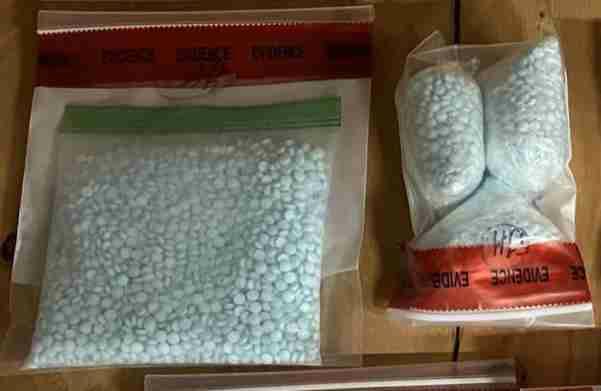In April, the most recent settlement in Washington state’s string of lawsuits against prescription drug companies brought the state’s total settlement payout about $1.3 billion, half of which will go to the state and the other half to local jurisdictions to combat the opioid epidemic, with more opioid money potentially on the way.
According to the Washington State Attorney General’s Office, settlements thus far equate to about $6.5 million in opioid abatement money for two governments in Grays Harbor: the county and the city of Aberdeen. That money will trickle in over the next two decades, with the largest settlement sum broken up across a 17-year payout period, while the most recent settlement carries an 11-year schedule.
That means creating a new structure for deciding how those funds will be spent. At a meeting on Tuesday, the Grays Harbor County Board of Commissioners approved the framework for a new committee that will field applications for opioid treatment projects and propose them to commissioners.
Andi Harland, the county’s interim budget manager, said on Tuesday the committee will convene soon to determine future operating procedures. Along with Harland, the committee will include the fiscal manager for the health department, the director of the Grays Harbor County Superior Therapeutic Court, the fiscal manager for the sheriff’s office and an administrator from the prosecutor’s office.
Harland told commissioners Tuesday that those members were selected either because they had an “interest in this fund or the expertise and experience” with project that might be proposed.
Last year, jurisdictions participating in the opioid money — cities and counties with more than 10,000 people — signed a memorandum of understanding called “One-Washington” that outlines permissible uses of settlement funds. Those include opioid addiction treatment and support for people in it, connecting people to care, creating programs specific to treating addiction through the criminal justice system, treatment for pregnant women and parents, prevention of opioid overprescription, misuse and overdose, and others.
In the agreement, the counties and cities agreed to proportions by which to split the settlement funds, with Grays Harbor County set to garner about 1% of the funds and Aberdeen about one-fifth of that.
Last year, the commission created a new account called the Opioid Settlement Fund and stocked it with $242,120.
As of the latest settlement, Grays Harbor County is slated to receive $5.2 million once all funds are distributed.
Per the statewide agreement, participating cities and counties are required to create a public database to log allocations and spending of opioid settlement money. Because of an interagency agreement, Cowlitz County is keeping track of the numbers for Grays Harbor, Pacific County, Kelso and Longview.
Grays Harbor agreed to join that group of jurisdictions last year to form an Opioid Abatement Council, another requirement of receiving settlement funds. Grays Harbor County Deputy Prosecuting Attorney Jon Beltran told commissioners last year that the purpose of the council is to ensure funds of other jurisdictions are being spent correctly, although the council won’t have any direct influence over how Grays Harbor spends its funds.
According to Aberdeen City Administrator Ruth Clemens, Aberdeen also requested to join the group and is waiting to hear back on whether the application has been accepted.
Accounting for all settlements to date, Aberdeen will receive $1.3 million in total opioid settlement funds.
Contact reporter Clayton Franke at 406-552-3917 or clayton.franke@thedailyworld.com.


